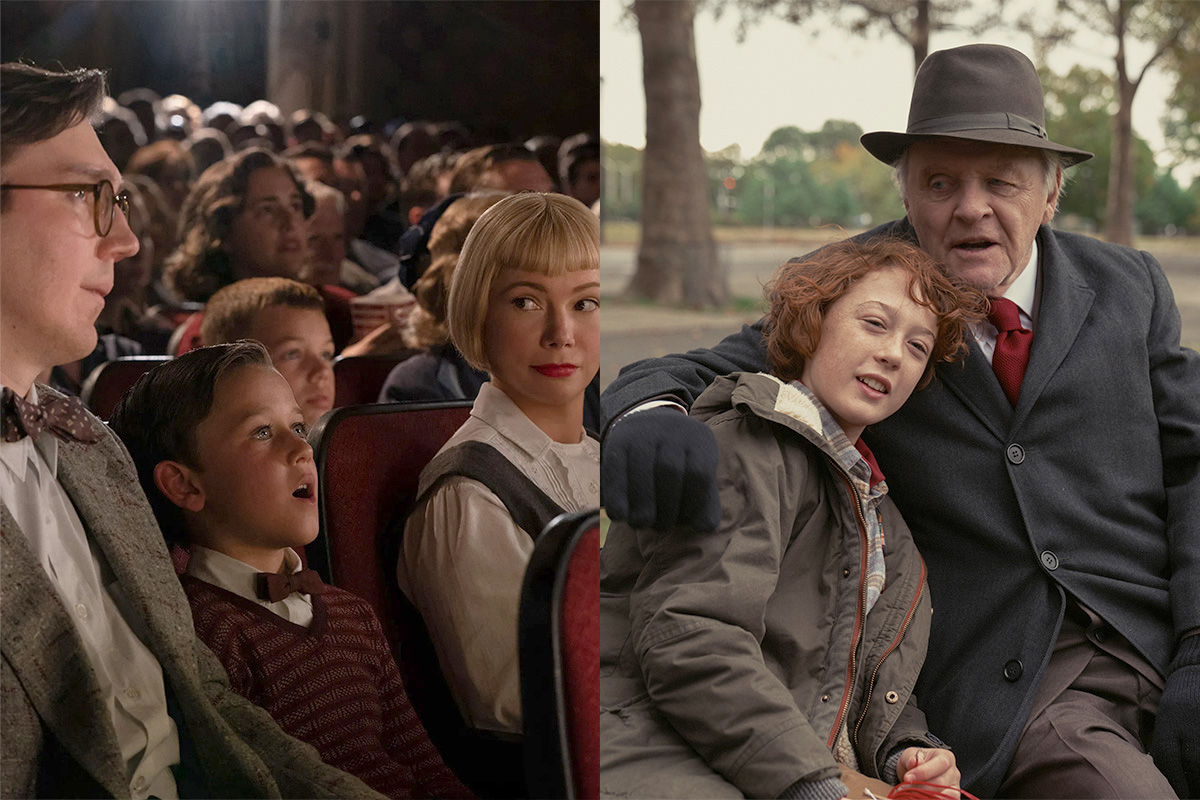Light spoilers ahead for “The Fabelmans” and “Armageddon Time.”
Two of the great filmmakers of our time are taking a look back at their childhoods — through a very Jewish lens. Both James Gray’s “Armageddon Time” and Steven Spielberg’s “The Fabelmans” feature young, artistic protagonists — mirrors for the directors — who struggle to pursue their passions against the expectations of their families. Gray’s character wants to be an artist, while Spielberg’s wants to be a filmmaker. These characters experience backlash from older family members, who feel the boys’ pursuit of art insults and undervalues all the hard work and unimaginable discrimination they underwent so they could be taken seriously in America.
These movies are semi-autobiographical, coming-of-age dramas infused with the directors’ own experiences growing up Jewish. Each story examines American antisemitism through its effects on the characters’ identities.
“Armageddon Time” follows Paul Graff, a young Jewish-American boy in the 1980s, and focuses on his friendship with a Black classmate. Paul struggles to balance his desires with the expectations of his family that has worked hard to assimilate in order to achieve the American dream.
“The Fabelmans” also tracks a Jewish-American boy as he grows up. Spielberg’s protagonist, Sammy Fabelman, learns to use film as a way to reveal the truth about his family and the world around him. As Sammy discovers how his camera can either expose or soften the people around him, Spielberg highlights the power of storytelling; his characters are made to examine their own faults and open up to change.
Both films take place in a post-World War II context. These families live in a country that markets itself as celebrating and thriving off diversity. Yet these characters consistently find themselves in situations in which they face discrimination because of their Jewish identity. While Sammy faces violent discrimination, resulting in a beatimg from his classmates, Paul faces indirect and generational effects of antisemitism. Each secular Jewish family teaches its son that hiding his Jewish identity is the path to success.
Both protagonists take this lesson to heart, desperately concealing their Jewishness in social contexts. In “Armageddon Time,” Paul’s grandfather, played by Anthony Hopkins, tells the boy that the greatest gift he’s given his grandson — after the flight from Jewish persecution in Ukraine and the arrival in America, of course — is the last name “Graff.” By choosing a less identifiably Jewish surname, Grandpa Rabinowitz ensured that employers would continue to consider Paul for jobs even once they’d hit their Jewish quotas. “Armageddon Time” works to expose the advantages and disadvantages of being a chameleon by using Paul’s classmate, who cannot hide his difference, as a point of contrast. One story doesn’t negate the suffering of the other, but rather teaches viewers that the ability to pass unnoticed under some circumstances is an advantage, and we must use that advantage to uplift others.
Spielberg’s Sammy is less lucky: Markedly shorter and scrawnier than the boys around him, he is identifiably Jewish. This leads him to him getting beaten up, chased and taunted by classmates who call him “Bagelman” instead of “Fabelman.” But Sammy then turns this around: He uses his camera to uplift the people picking on him, which results in their coming to see him as a good guy — not the stereotype they were taught to hate.
Many Jews are white-passing, which often means we are left out of discussions about race and discrimination. Through their stories, Spielberg and Gray remind audiences of our recent past. As we get farther away from the Holocaust and the number of survivors dwindles, it is critical that Jews remember what hate and discrimination can bring. Spielberg and Gray use their semi-autobiographical stories as evidence of the ways in which discrimination against Jews still exists and remains ingrained in society.
Fortunately, they propose ways that audiences can combat discrimination. For Spielberg, narrative is the way to uncover truth. If we show people what they are doing wrong — and, most importantly, make them feel for the wronged — we create an opportunity to combat discrimination and teach people to see the world differently. Gray believes that as white-passing people, we have an obligation to stand up for those who do not have the same privilege as us. His message: Jews should feel all the more responsible to speak up because, when we don’t hide, we know what it is to be othered.
The release of these two films has coincided with a critical moment in public awareness of antisemitism. Given recent events, people beyond the Jewish community are noticing the uptick in visible antisemitism — and showing some concern. Perhaps now, audiences will be especially open to the personal stories these directors are telling.
In a world hyper-fixated on differences and the privileges or disadvantages that they might bring, Jews are finally starting to get their seat at the table by sharing their own stories. As is evident in these films, the best version of Jewish activism uplifts all people, not just ourselves. In line with the principles of tikkun olam, Jews teach that in order to make the world better, we have to make it safe for all.



